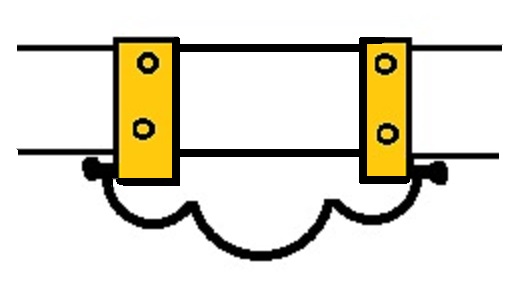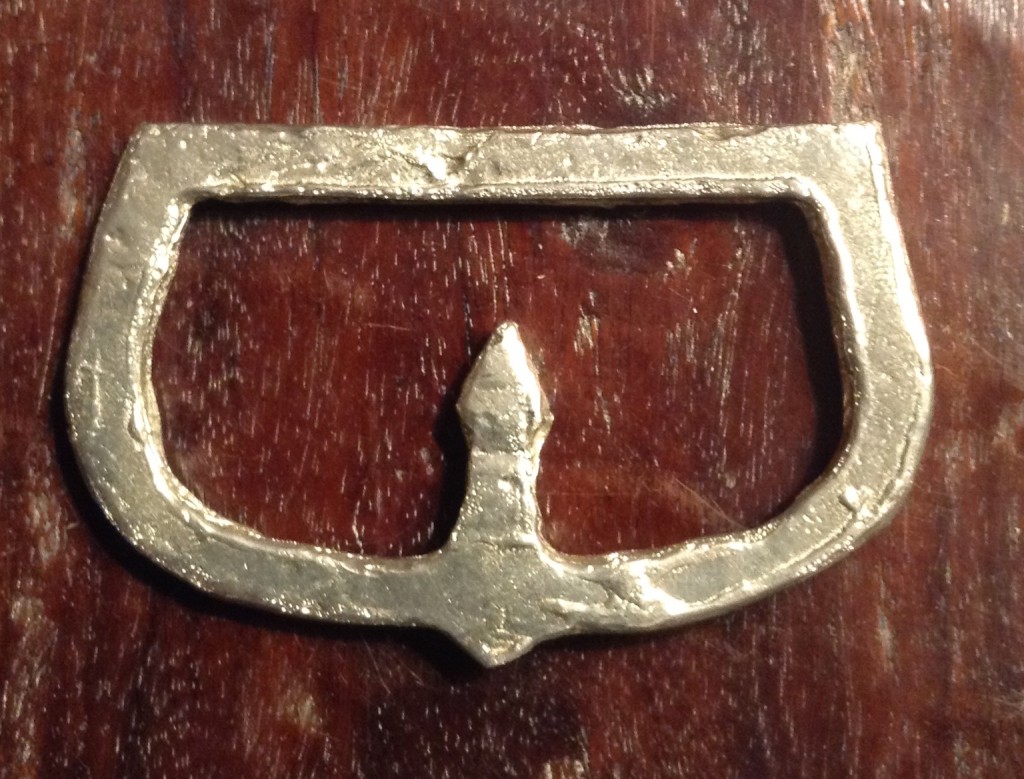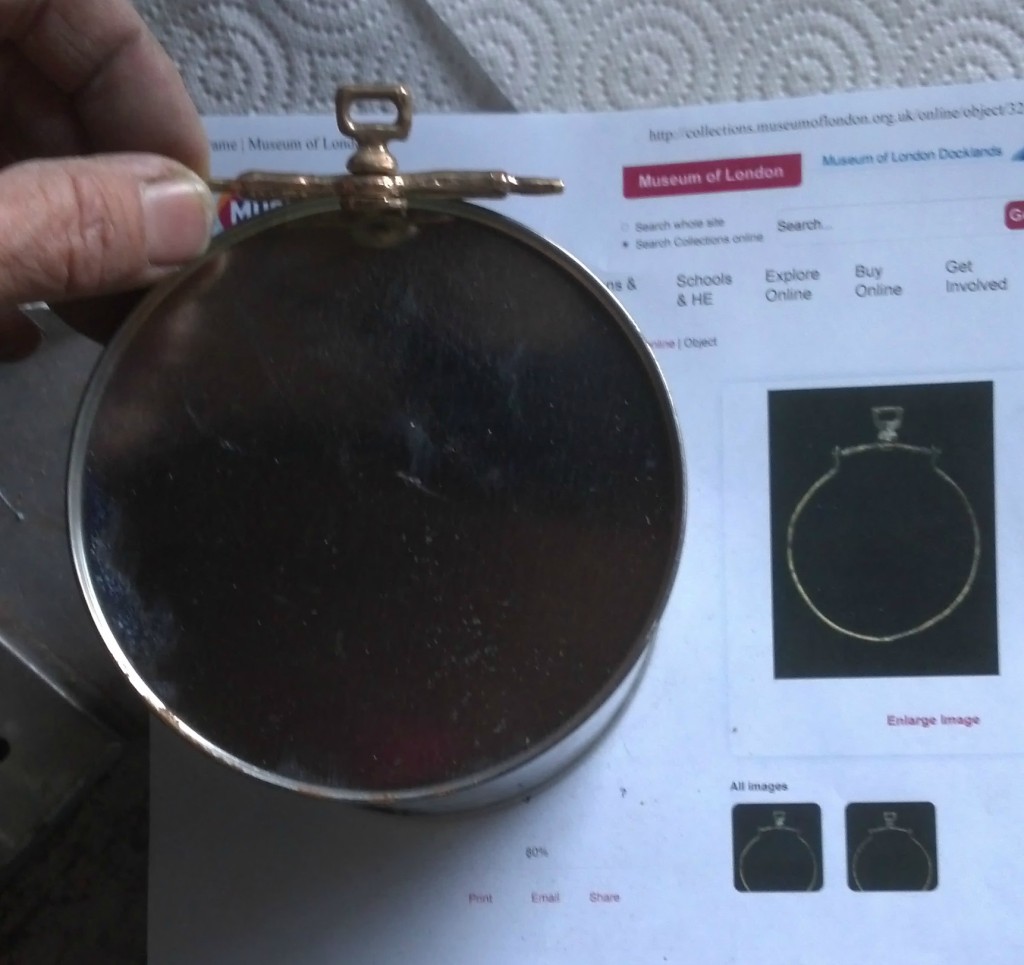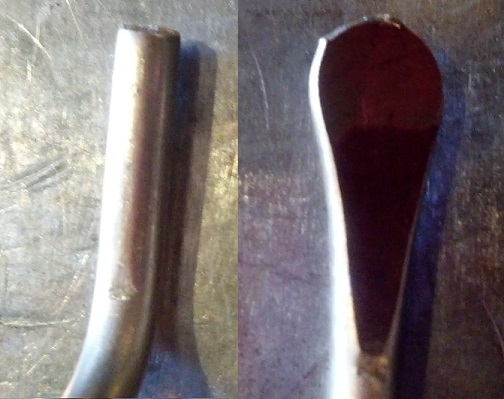Now that we have the concept of how a Medieval metal frame purse is made, we should probably look at how they were used. I am not talking about what people put into their purses. We can safely assume, since there are paintings of people taking coins from their purses, that they were sometimes used to hold money. I mean that we should try to understand how they wore their purses. What sort of options did they have?
Modernly, in most of the reenactment groups that I have seen, a purse is often hung directly from a belt. I have done this many times myself, and one of the problems is that if the purse is heavy it will tend to crease, roll, or fold the belt in an uncomfortable fashion. The physical abrasion of the purse cord can also damage the belt. We see lots of people in illuminations with all sorts of purses just hanging on strings or straps from their belts. But there is another solution, which also prevents the damage to your belt, and gives you yet another opportunity for bling. I am talking about purse hangers.
It is difficult to know how common purse hangers were in period, but a quick search in the Portable Antiquities Scheme Database reveals quite a few. I cast a couple of the most common forms of these hangers a couple of years ago. The first one that I cast was this one.
We see several versions of this form of purse hanger, some with, and some without the bar. These purse hangers were usually permanently attached to the belt with rivets. This graphic shows how this cast piece is used. The string of the pouch can simply be looped over the suspended metal frame.
Here is a link to an actual example of this type of purse hanger in the Portable Antiquities Scheme.
Another common form of this hanger does not have the bar and uses two separate supports that are riveted to the belt, like this.
The other form of purse hanger that I cast was this one.
Here is an example of a similar purse hanger from the Portable Antiquities Scheme,
This type of hanger was attached to the belt with a piece of the metal and rivets just as in the previous examples.
There are many other forms of purse hangers, from simple hooks like this one to hangers with much more complex shapes than the ones that I cast.
I think that purse hangers could be a fun addition to a fancy outfit, and casting a couple of other shaped purse hangers is definitely on my “to-do” list. I hope that this sampling of purse hangers inspires you to try adding one, or more, to your collection of accessories.










